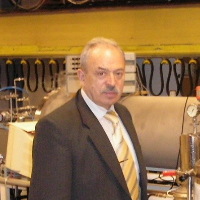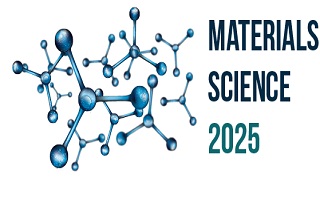Materials Science and Engineering
Address: The Grove, Bath Rd, Harmondsworth, West Drayton UB7 0DG, United Kingdom
Materials Science 2025

Kyiv National Taras Shevchenko University, Ukraine
Abstract:
Intermolecular hydrogen bonding, which is formed between water molecules, causes a variety of liquid water’ unique properties. This manuscript presents the experimental FT IR and FT Raman studies' results of water trapped in Ar matrix at temperatures from 10 to 50 K as well as condensed water at temperatures from 100 to 370 K. It is shown that temperature evolution for FTIR-spectra of water trapped in cryo Ar-matrices can be considered as an experimental model of the water structure transformation during the phase transition from gas phase to condensed confined water. The FTIR spectra comparison of water in Ar-matrices with the corresponding spectra of bulk water allows us to conclude that bulk water structure consists of clusters of different sizes. These clusters are elementary volume units of hydrogen-bonded networks. The comparison of the water vibrational spectra change with temperature in Ar matrix and in condensed phase allows us to conclude that intermolecular H-bonding can be seen in the water intracluster vibrational spectra. They are absent in the isolated water molecules spectra.The following conclusions can be drawn based on the analysis of the FTIR and FTRaman spectra of water in the temperature range +550 C - -500C, the following conclusions are made:1) When liquid water is frozen in the range of 00C— -100C, the number of five molecular clusters (pentamers) decreases and the number of six molecular clusters (hexamers) increases. With a certain predominance of the hexamers’ concentration in water, liquid water solidifies - a liquid-solid phase transition. In the temperature range of 00C - water is in a supercooled state.2) When solid water (ice) is heated, the solid-liquid phase transition occurs at a temperature of 00C without intermediate supercooling.3) In the Raman spectra of water, molecular polycluster substructures appear only in the liquid phase. Their number decreases when liquid water is heated. These substructures caused the broadband background in Raman spectra liquid water absent in the crystalline phase.
Biography:
Prof. Pogorelov Valeriy studied Physic (Molecular Spectroscopy) at the Kyiv National Taras Shevchenko University, Ukraine and graduated as PhD in 1966. He obtained the position Full Professor at same University in 1986. His scientific interests are Raman Spectroscopy, vibrational and orientational molecular relaxation, structure and spectroscopy partially ordered liquids, peculiarities of cluster structure of water and 10 first alcohols. He has published 6 books (last book is “Cluster structure of water”, V.Pogorelov, I.Doroshenko, A.Vasiiieva, “Lambert”, 146 p, 2022) and more than 200 research articles in SCI(E) journals.
